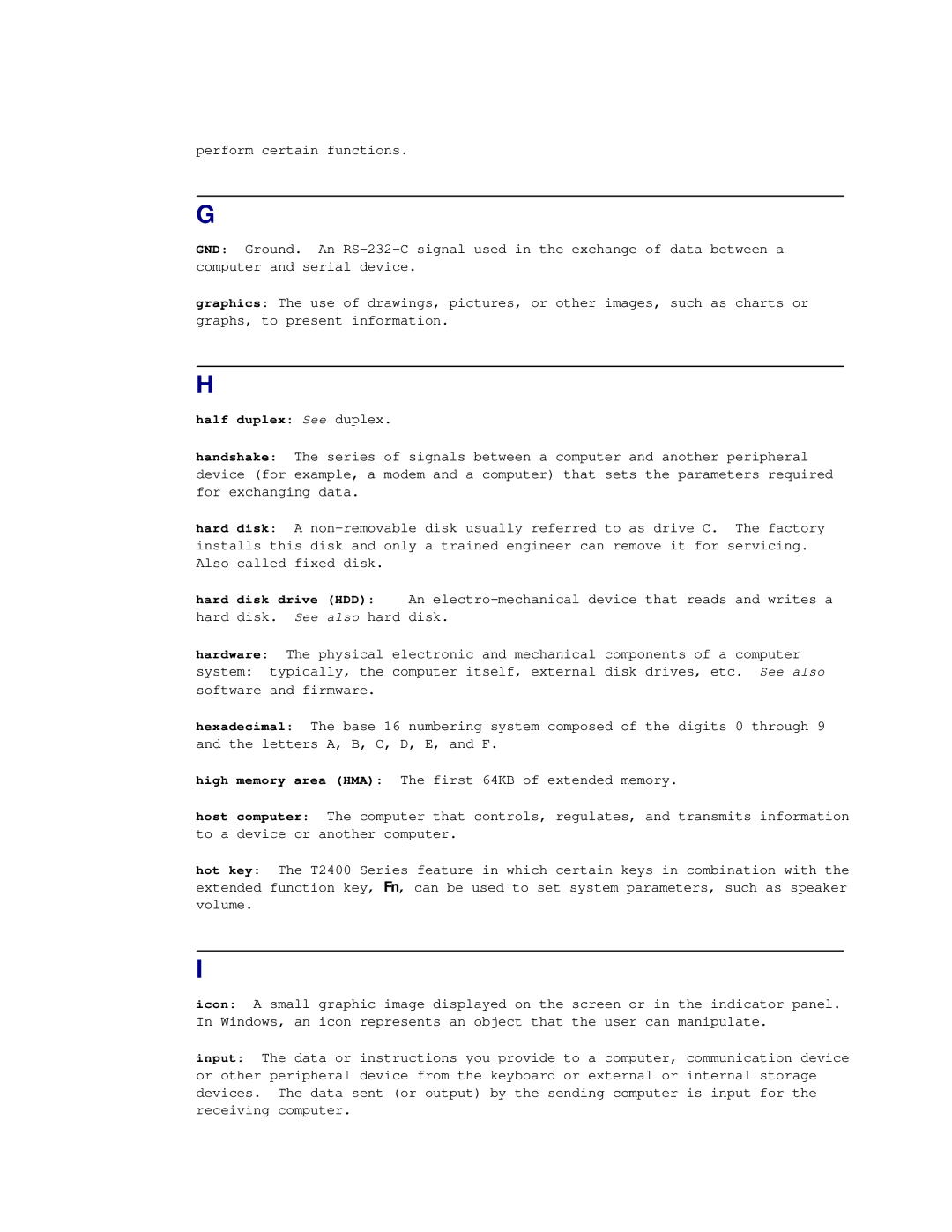
perform certain functions.
G
GND: Ground. An
graphics: The use of drawings, pictures, or other images, such as charts or graphs, to present information.
H
half duplex: See duplex.
handshake: The series of signals between a computer and another peripheral device (for example, a modem and a computer) that sets the parameters required for exchanging data.
hard disk: A
hard disk drive (HDD): An
hardware: The physical electronic and mechanical components of a computer
system: typically, the computer itself, external disk drives, etc. See also software and firmware.
hexadecimal: The base 16 numbering system composed of the digits 0 through 9 and the letters A, B, C, D, E, and F.
high memory area (HMA): The first 64KB of extended memory.
host computer: The computer that controls, regulates, and transmits information to a device or another computer.
hot key: The T2400 Series feature in which certain keys in combination with the extended function key, Fn, can be used to set system parameters, such as speaker volume.
I
icon: A small graphic image displayed on the screen or in the indicator panel. In Windows, an icon represents an object that the user can manipulate.
input: The data or instructions you provide to a computer, communication device or other peripheral device from the keyboard or external or internal storage devices. The data sent (or output) by the sending computer is input for the receiving computer.
